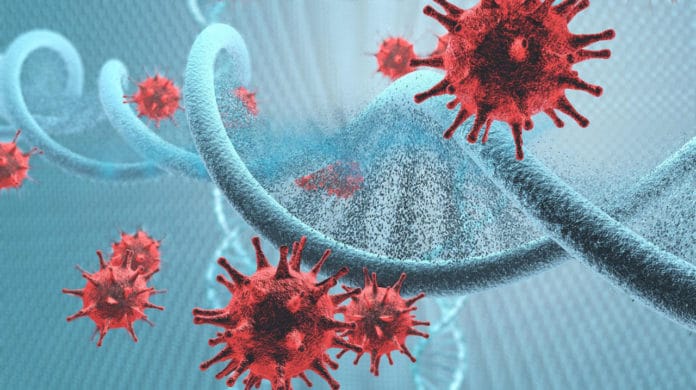Viral infection involves the incorporation of viral DNA into a host cell, replication of that material, and the release of the new viruses. During attachment and penetration, the virus attaches itself to a host cell and injects its genetic material into it.
When it enters the intracellular fluid, this foreign material triggers a defense mechanism known as the cGAS-STING pathway. The protein cyclic GMP-AMP Synthase (cGAS), which is also found inside the fluid, ties to the invading DNA to make another molecule. Thusly, this ties to another protein called Stimulator of Interferon Genes (STING), which prompts an inflammatory immune response.
Sometimes, the material contained inside the fluid – and in contact with the cGAS protein – comes not from a virus but from the cell itself, for instance, after the nucleus has accidentally ruptured. When this happens, the cGAS-STING pathway isn’t activated.
How cells regulate the activity of cGAS toward self-DNA and guard against potentially damaging autoinflammatory responses is a fundamental biological question, remains a mystery.
EPFL scientists, in a new study, discovered the fundamental mechanism behind this. They found that a small protein is known as Barrier-to-Autointegration Factor (BAF) plays a vital role- by binding to the inoffensive DNA, BAF prevents the cGAS protein from doing the same, thereby stopping the cGAS-STING pathway in its tracks.
BAF reinforces the cell nucleus, associating the nuclear envelope (or film) to the DNA inside. Tests have indicated that when this protein is removed from lab-grown cells, the nucleus ruptures. This rupture releases the gene material into the intracellular fluid, where it comes into contact with the cGAS protein and triggers the cGAS-STING pathway – just as if it were foreign DNA.
Although there are various reasons behind nucleus rupture, such as applying mechanical pressure, Baptiste Guey, one of the paper’s lead authors, suggests that only one of these methods – removing the BAF protein – induces an immune response. Therefore, we can conclude that BAF plays a crucial role in preventing the cell from attacking its DNA.
Marilena Wischnewski, another lead author of the paper, said, “The protein’s inhibitor role is vitally important: although the cGAS-STING pathway helps the body fight off infections, it also needs to be kept in check. Nuclei do occasionally rupture, but cells can repair the damage. If cGAS bound to the DNA every time that happened, the consequences would be more serious.”
“BAF is also believed to play a role in some types of tumor. Atumors concentration of the protein in cancer cells may be associated with a poorer prognosis. It could be that BAF makes tumors more resistant. By preventing activation of the cGAS-STING pathway, it might allow cancer cells to evade the body’s immune system.”
Journal Reference:
- Baptiste Guey, Marilena Wischnewski, Alexiane Decout, Kristina Makasheva, Murat Kaynak, Mahmut S. Sakar, Beat Fierz, Andrea Ablasser. BAF restricts cGAS on nuclear DNA to prevent innate immune activation. Science 14 August 2020. DOI: 10.1126/science.aaw6421
